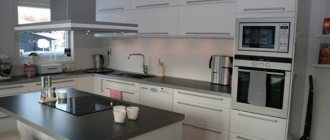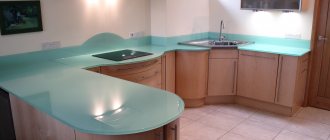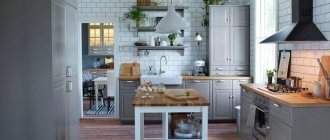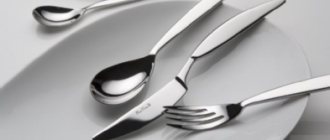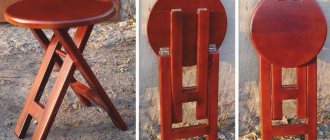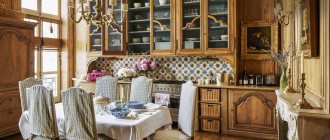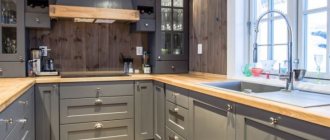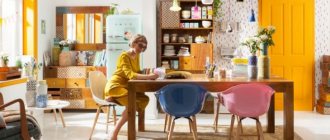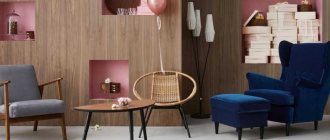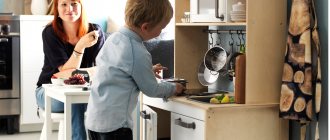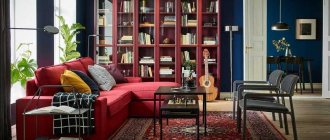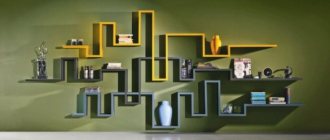What is a panel?
First you need to understand the history of the name of the product, which served as the starting point. The panel is a thin insert in the door leaf; it is thinner than the frame itself.
It can often be seen on interior doors. It is a thin sheet that is inserted inside the canvas. Can be made from any material. Thanks to the panel, it is possible to avoid ordinary boring products, achieving originality and decorativeness by giving them unusual shapes. This sheet decorates the door and creates an accent on itself or its fragments. This technique allows you to create a product that is stylistically designed and matches the rest of the interior. The canvas can display three-dimensional elements , textured patterns, etc. The design depends on the wishes of the customer and the imagination of the manufacturer.
Application of panel doors
Such doors are used everywhere and have no restrictions in their scope.
These models can be seen both in offices, public places of various institutions, and in residential buildings. Article on the topic: How to restore swollen furniture Panel doors are used to design interior openings and entrance doors. , materials and functional characteristics play a fundamental role . Interior models with panels are made of lighter materials, for example, it could be plywood or MDF sheet. Entrance structures are often made of metal or hard wood.
Design
What the door panel is essentially has already become clear. Now we need to figure out how it is attached. That is, to understand the design as a whole. The panel is inserted into the frame, which is made of solid wood, then fixed inside using special grooves. To prevent its movement in the frame, glue or thin glazing beads it in place.
Paneled structures have their own classification, the criterion being the shape of the insert. The panel is:
- Flat. A thin sheet of material is used that has no protrusions or cutters, that is, absolutely smooth.
- Volumetric. It contains volumetric shaped elements with milling around the perimeter. This design is classic and often used.
- Typeset. The base consists of several lamellas that are joined together using a tongue-and-groove method.
There are the following varieties that need to be distinguished:
- Figareinaya. A figarea is an internal insert with thick edges that gradually become thinner towards the edge of the piece. This panel is attached using longitudinal grooves and fixed with wood glue.
- Floating Thanks to the gaps left around the perimeter, destruction of the material is prevented. Depending on the microclimate in the room, the insert can change in size. Attached with glazing beads.
Door panel: how to make and install
Structurally, doors are divided into two main types: panel and panel. With the first option, everything is clear - it is a frame with filler and cladding, forming a solid shield. But perhaps not everyone knows what a door panel is: this is the name given to the decorative elements that are inserted into the door frame.
They are able to turn a door into a real masterpiece of carpentry art. In addition, they can be placed not only on doors, but also used, as shown in the photo above, in the complex design of furniture and walls.
Using the video in this article, we will tell you how to make panels and assemble a door - this is a task for those who like to create useful and beautiful things with their own hands.
Materials
Not only the appearance of paneled doors depends on the material of manufacture, but also the characteristics, margin of safety and reliability, as well as cost.
To make the frame of the door leaf, take a solid wooden beam . Not only wood, but also other materials are suitable for insertion. This already turns out to be a combined type of product.
Wooden versions of products involve the use of soft varieties and more durable valuable species. A pine, cherry or spruce door will not cost very much. Oak, teak, beech, and walnut are considered more valuable and durable. Red and black trees belong to the elite class.
Article on the topic: How to properly wallpaper furniture
Important! Wood structures can combine several species. Therefore, in order to prevent the destruction of the panel due to changes in temperature and humidity, you need to clarify this nuance with the seller before purchasing.
Inexpensive combined models combine MDF sheets, plywood, chipboard, and pressed paper. Blind inserts are covered with leather or its substitute. Whiter, more interesting products are obtained through the use of glass. It can be regular, matte, colored, embossed, stained glass, with photo printing or oracal, etc.
Types of frame facades
For the manufacture of frames, the following materials are used: wood, MDF, chipboard, aluminum.
- Natural wood meets all necessary requirements. It demonstrates durability, reliability, environmental safety, and high decorative performance. However, such models are quite expensive.
- MDF has similar characteristics to solid wood and combines quality and reasonable price. The material copes with negative factors, is easy to process, and does not emit compounds harmful to health.
- The main attractiveness of chipboard is its affordability. Otherwise, particle boards are inferior to previous samples. Chipboard strongly absorbs moisture, has a loose structure, and is prone to deformation. The emission of formaldehyde, which is part of the binder filler, cannot be ruled out.
- Aluminum frames are considered the most durable. It is practical, resistant to wear, and is not afraid of temperature changes, changes in humidity, bacteria, and mold. However, metal should be protected from contact with sharp objects. An aluminum frame will look appropriate in a modern interior, but will not be suitable for classical styles.
Design
Thanks to the almost unlimited variety of materials used, a paneled door can reflect any style and design . Therefore, choosing the optimal model that meets the requirements of a certain interior style is not so difficult.
For living rooms, kitchens, and living rooms, panel doors with translucent inserts are usually selected. In fact, the ideal solution is to purchase a canvas with glass in the central part. Of course, blind inserts are more suitable for bathrooms and toilets. However, this does not mean that the choice seems boring. A unique interior can be achieved by decorating doorways in one style.
an important role in the process of creating a wide palette of models of any style. Thanks to coatings such as PVC, veneer, laminate, etc., as well as various cutters, a variety of inserts is achieved. They can be straight or curly in shape, contain additional overlays, carvings, volumetric elements, or elaborate relief. Over time, it is possible to replace the boring middle.
If the paneled door has glass, then you can show your imagination and put a design on it, cover it with a film with a pattern, photograph or any other image, and also turn it into a stained glass window. This design knows no boundaries.
Advantages and disadvantages
From all of the above, we can conclude that paneled doors have the following advantages , such as:
- Decorative and aesthetic appearance.
- Thanks to the thin insert, the weight of the canvas is reduced.
- The structure can be disassembled with the replacement and restoration of its elements.
- The durability of the structure is determined by the presence of an insert made of a different material. After all, a solid massif of soft rocks can dry out within a few years.
- Reducing prices by reducing the amount of material and replacing expensive elements with cheaper analogues.
Article on the topic: How to assemble an Atlanta sofa with a lot of furniture
The use of low-quality raw materials and non-compliance with the rules of technology during production are shortcomings that depend on the integrity of the manufacturers and are entirely on their conscience. In general, loin doors are an ideal option and can be installed in any home.
Thus, the panel is the central part of the door, which is distinguished by a number of positive features and often has an aesthetic function, as it is shaped into a variety of shapes, decorated and made from a variety of materials.
Installation of facades and handles
We apply the facades one by one to the body. Mark the hinge axes.
We mark the centers of the loops on the facades at a distance of 22 mm from the edge.
On the case - 37 mm.
Use a Forstner drill to select a hole for the hinge.
Use an awl to mark the centers of the holes in the loops.
We perform final sanding with P180 grit sandpaper.
At the same height in the center of the vertical frames of the facades, we drill holes with a 3 mm drill.
We fasten the handles in the area of their upper support heels with self-tapping screws with a 4.2x50 mm press washer. By rotating the handles, we set them parallel to each other. We make a drill in the area of the lower heels and tighten the second pair of screws.
what is a panel?
Of course, in furniture production, panels are a common and often very useful part of facades. For example, we can see panels on kitchen facades or cabinet doors. First of all, it is a thin board inserted into the frame of a door or facade. As a rule, the panel is usually somewhat recessed and has the shape of a rectangle. Often with rounded and figuratively cut corners. Although it can also be the other way around, convex paneled facades.
At the same time, the frame, or frame of the facade, into which the panel is inserted, is most often made of solid wood or MDF. Of course, the panel itself can be made of MDF, veneer or even chipboard. Thus, in addition to the traditional beauty of paneled facades, the use of panels can also help to reduce the cost of production. In addition, the design of the facade with frame and panel is much stronger than conventional solid wood boards due to the appearance of additional stiffening ribs.
FURNITURE WITH FILLED FACADES IS MUCH MORE PRACTICAL FOR TWO REASONS
First of all, it is much less susceptible to drying out due to fluctuations in temperature and humidity. The frames of the panels seem to “pull together” the facades of the furniture.
Secondly, if a scratch or crack appears on one of the panels, restoration or replacement will be much easier by simply replacing one part.
Undoubtedly, paneled facades are a real haven for a furniture designer. True, they are used mainly in classical styles. Panels are not suitable for trendy smooth facades without handles. But with their help you can create harmonious examples of furniture in the Empire, neoclassical, English colonial or Victorian styles.
In addition, facades with panels are much lighter. Because the panel itself is made of thinner material. Thus, the load on the body becomes less. For example, when making particularly bulky and tall furniture, this is a serious advantage. Because, usually, furniture in a classical style adds a lot of decorative overlay elements - pilasters, friezes. In addition, the fittings can also be massive - for example, heavy curly handles made of aged brass or copper. The use of panels allows you to significantly “unload” the facades.
Article on the topic: How to make furniture from plastic bottles with your own hands
The panel inserted into the frame can be made of glass or filled with stained glass. Of course, lately panels in the form of blinds - vertical or horizontal - have become fashionable. In addition, the shape of the panels can also be as decorative as possible - curly corners, wavy lines, complex carvings decorating the edge.
White MDF kitchen
Facades: MDF. Finish: Enamel/Patina. Color: According to RAL or NCS scale. Body: EGGER chipboard. Fittings: BLUM with door closer. Additionally: complete equipment. To order according to individual sizes. Production time: 45 working days.
Corner wardrobe
Facades: MDF panel classic. Coating: Enamel. Color: According to RAL or NCS scale. Body: EGGER chipboard. Internal filling: EGGER chipboard. Sliding system: Germany. Production time: 45 working days. To order according to individual sizes.
Sliding doors to the dressing room
Facades: MDF. The panel is selected separately for the interior. Finish: Enamel. Decor: MDF layout. Fittings: Suspended sliding system. Handle: Mortise. Color: According to RAL or NCS scale. To order according to individual sizes. Production time: 40 working days. Author: Vera Sheverdenok.
Sliding wardrobe "Classic"
Facades: MDF enamel. Coating: Enamel. Color: According to RAL or NCS scale. Body: EGGER chipboard. Sliding system: Germany. Internal filling: at the request of the Customer.
Master class: how to make a pseudo-panel
I want to tell you how to make some kind of facade, door, hatch that looks similar to a classic carpentry door with a panel. The carpentry of the panel itself is not an easy task and requires both skills and special tools.
I'll show you with a small example how this can be imitated quite easily.
First, let's decide what our basis will be. This could be plywood, chipboard or furniture board. To imitate, I used a piece of plywood, a pine batten and a glazing bead.
I will need to cut the rail at a 45 degree angle. I use a miter saw for this, but you can use a hand saw with a fine tooth and a miter box, the result is just as good. You can cut the planks at right angles, it doesn’t matter. This will look even more like a classic harness. Create the so-called pillar and transverse parts. In this case, vertical parts are made along all the heights of the base, and transverse ones fill the space between the pillars.
Cut the pieces to the required length. I advise you to take your time and carefully measure all the corners of the base, otherwise our planks may not meet. I advise you to do the markings with a knife; the pencil leaves a mark that is too wide, which is not suitable for precise cutting.
Paneled facade - design features
The frame facade of the cabinet is a structure consisting of a frame and an insert. The latter is also called panel, which translated from German means “filling”. Thin shields are placed in a finished frame, which has special grooves. The elements are fixed using glazing beads placed on glue or nails.
Article on the topic: How much does a furniture designer earn?
Paneled facades have the following advantages:
- the weight of the door leaves is reduced, and as a result, the load on fastening units and other parts of the frame is reduced;
- there is an opportunity to save on the purchase of furniture, without losing aesthetic indicators;
- decent strength characteristics, resistance to aggressive conditions;
- wide choice of materials, shapes, colors.
Styling
The frame furniture façade must fit harmoniously into the overall style of the interior, so it is important to pay attention to the characteristic details.
- The Gothic style involves the use of decor such as carved ornaments of strict geometry, stained glass inserts, and forged elements. In this case, straight vertical lines look appropriate, even the arches have pointed shapes.
- Baroque belongs to the palace styles, so it is characterized by pomp and decorative excesses. The panels acquire a rounded configuration. They are complemented by carved motifs consisting of curls and spirals.
- Rationality distinguishes cabinets from the Classical era. They acquire refined simplicity and symmetrical design. For decoration, porcelain inserts, forging, mosaics, and inlay are used.
- Modern products tend more towards minimalism. They are characterized by rationality, laconic design, strict forms, minimal or complete absence of decor.
Furniture products with framed facades make it possible to make the interior unique due to the variety of possible materials. However, when choosing, you should take into account the purpose and installation location of the structures. Models for the kitchen and bathroom must first of all be highly resistant to moisture, temperature changes, and easy to clean from dirt.
Panel material
A compromise between attractiveness, price and practicality is a frame facade made of wood with glass as a panel. Such sets give the kitchen a businesslike look and leave room for creativity in choosing other furniture, decor and household appliances.
In addition to glass, panels are made from:
- plywood,
- array,
- laminated MDF,
- veneered MDF.
Inserts are created in various geometric shapes: square, oval or trapezoid. Thus, for designers and owners of the set, opportunities are opened to give the kitchen a unique look. Doors with a central part in the form of a rectangle will be complemented by an oval dining table, trapezoids - round potholders or other accessories. Stained glass, laminated glass (triplex), and carved elements are also used for additional decoration.
What are panels made from?
Decorative inserts for paneled doors are made from different materials. Most often used:
- Natural array. Heavy, but will last longer than analogues. It has good strength and excellent insulating properties. Attractive, it can vary in texture and shade, so each canvas looks unique. Needs regular and proper maintenance.
- Wood panels – MDF. Lighter in weight and easier to process, which allows you to create models with figured milling. Covered with veneer, eco-veneer and PVC film. Large selection of natural shades.
- Glass. Used as additional decorative inserts that can be easily replaced. Most often they are matte or tinted; stained glass of various types is less commonly used. Products that have been hardened or covered with a protective film are used.
- Sandwich panels. Economy segment, suitable for furnishing offices and warehouses, where the level of insulation and aesthetic components are not so important. They are made from hollow or cellular material. They weigh little and are not resistant to loads and shocks. Small selection of shades and textures.
Article on the topic: What types of office furniture are there 40
If the panel is not made from valuable wood, then it can be veneered. For this we use:
- Veneer. Thin cut from a tree. It stands out for its originality of pattern and uniqueness of tone. Requires careful handling and does not tolerate moisture well. Covered with varnish or paint, can be tinted in the chosen color. Designed for long service.
- Eco-veneer A partially natural material made from a mixture of crushed shavings and binding polymers. As a result, it resembles a cut from an array, has a pronounced wood texture, a natural shade, and is pleasant to the touch.
- PVC film. Artificial cladding that is resistant to humidity, temperature changes and fading. Usually imitates natural wood, including valuable species. Does not require maintenance, just wipe off dust. It has a pronounced woody texture.
Laminate can be used less frequently for cladding, since it is less durable and will not harmonize well with a wooden frame.
Installation of panel doors (video)
If we talk about the disadvantages, it is possible to highlight the use of low-grade raw materials and non-compliance with production technology, but this disadvantage depends on the responsibility of the manufacturer of panel doors. In general, such products are an ideal solution for decorating any apartment or office space.
The word “Filenka” came into Russian from German in the 18th century. The word "Fullung", literally meaning "filling, filling", is derived from the German "Fullen" - to fill.
Paneled facade. Paneled facades for the kitchen
The modern world is complex and multifaceted. The market today is replete with many offers in a variety of areas. Often, in a conversation with a designer about decorating a country house, apartment, or when ordering furniture, we often hear such a seemingly old-fashioned, unlike modern terms, but at the same time, often used word - FILL.
This is the concept we wanted to talk about today. So, FILL - what is it, where does it come from and where is it used today?
The word FILL (derived from the German Fullung, literally “filling”) means a decorative element, part of the field of a wall, door or pilaster, recessed or having a frame, close in shape to a rectangle (usually rectangular, but may have kinks in the corners, and the ends can also end in semicircles);
Article on the topic: Sonoma oak furniture what wallpaper
It is widely used in the production of furniture facades, interior and entrance doors, screens, shutters, etc.
A panel in woodworking is a thin board, plywood or some other plate inserted into the frame of a product.
Thin plates for this can be made of different materials:
- Trees;
- Plywood;
- MDF;
- coated MDF
- laminated chipboard;
- Glass;
TYPES OF FILLS BY CONFIGURATION
There are four main types of inserts that determine the appearance of the product:
- floating - when the thickness of the insert is equal to the thickness of the frame;
- flat – smooth plate with a flat frame surface;
- figarean - distinguished by a convex middle part, which gradually becomes smaller at the edges;
- with folding moldings - to strengthen the panel in the structure, decorative glazing beads are used more reliably
ADVANTAGES OF PANEL FACADES
Paneled facades, like any other, have a number of undeniable advantages.
These include:
- reducing the weight of the entire product through the use of thin inserts;
- the possibility of restoration and replacement of the panel in case of damage to the part;
- resistance to fluctuations in temperature and air humidity, which protects the structure from drying out;
- beautiful appearance and a large selection of product options.
Wooden panel doors can be decorated in combination with the style of the surrounding room:
- decorated with carved and forged elements
- consist of panels made of different types of wood
- diluted with all kinds of decorative inserts, including triplex and stained glass
The size and shape of the inserts can be very different and have both a constructive meaning and a decorative function. Subsequently, replacing the panel makes it possible to change the appearance of an existing product by installing another insert. For example, replacing the glass part with a mirrored or opaque one, or, conversely, to achieve a more elegant look for a door or facade, instead of a blank wooden plate, you can use a stylish stained glass window that resonates with the surrounding environment.
The evolution of panels in different eras
Gothic (from the 11th - 12th to the 15th - 16th centuries in Central and Eastern Europe) is characterized by arches with a pointed top, narrow and high towers and columns, a richly decorated façade with carved details (vimpergi, tympanums, archivolts). Multicolor stained glass windows are the hallmark of this style. Many vertical lines add special harmony and imply a person’s desire for something sublime. The furniture of the Gothic era is simple and heavy in appearance. For example, clothing and household items began to be stored in closets for the first time during this period. Previously, exclusively chests were used for these purposes. One of the most common methods of making furniture has become frame-panel knitting. The facades were decorated with wood carvings and forged parts.
Related article: How to remove wax crayons from furniture
Furniture of the Renaissance period - massive cupboards with zoomorphic details, the legs of which for the first time have the appearance of animal paws. The Baroque style is characterized by a desire for pomp; a wealth of decorative elements, curvilinear shapes (curls, spirals). The panels were in the shape of a coat of arms or rounded and decorated with carvings and stucco. Having become acquainted with the European furniture tradition, Peter I not only brought samples to Russia, but also sent talented Russian young people to Europe to study “cabinet work.” This is how the Baroque style came to Russia at the beginning of the 18th century.
In the 18th-19th centuries, classicism introduced rationalism, balance of composition, and a tendency towards harmony, clarity and simplicity of expression. For the first time, two-color porcelain inserts are being used. Forged decorations and marquetry are still used to decorate panels.
These days, the variety of decors is surprising. Designers, using the experience of centuries-old traditions, relying on the latest technical capabilities, sometimes offer quite extravagant solutions - finishing with stone, natural leather, etc. However, the kitchen remains a work area and when choosing facades, the consumer takes into account, first of all, practicality and quality.
The most expensive ones are made from valuable wood species. They have increased strength, both due to the characteristics of the material and due to the non-standard fastening of the panels to the canvas. In addition to standard species - oak, beech, teak, walnut, and others, paneled doors can also be made from more exotic wood, for example, mahogany. In some cases, exotic species are imitated by applying a special varnish.
For those who like to save money, but prefer solid natural materials, soft types of wood are suitable. They are durable enough to serve their owners for a long time, but are not as expensive as valuable breeds. Structures made of soft wood are suitable for rooms where traffic is not so high, or where doors are used only during a certain period, for example in a country house. Despite their affordable price, they are treated with special anti-corrosion and anti-fungal compounds and, at the request of clients, treated with varnish with pigments, which allows you to give the wood the required shade. Even after such manipulations, the canvas looks natural and impressive.
Article on the topic: What is teak furniture
Combined doors involve a combination of inexpensive materials and good finishing. The first point allows you to make the door attractive to the buyer, and the second allows you to use it in various design solutions. This option may not last for several decades, but it will be an excellent addition to the interior in times of austerity.
The nuances of making a door
So, we will assume that you have developed a sketch, stored tools and materials, manufactured and installed the door frame. What's next?
Before you start producing panels, you need not only to make the parts of the door leaf, but also to assemble part of the frame. To do this, connect one vertical post with two horizontal frame parts: a sill profile and a frame (the upper element of the frame).
- Despite the fact that you have a drawing with dimensions, you need to measure the centerpieces and future panels after the fact, since it may well turn out that there are some deviations. This is especially true for models where the horizontal strapping bars have a curved shape. First, a centerpiece is installed on the frame: tenons are cut on the block on one side, it is tried on, and then the second end is processed according to the pencil mark.
- Depending on the structure of the door, the crossbars are inserted with tenons into the grooves of the strapping parts. If there are 6-8 panels on the door, then there will be several middle panels. The length of the horizontal elements usually corresponds to the width of the canvas. At the same time, the vertical mullions turn out to be short, and their height is equal to the distance between the horizontal elements.
The manufacture and installation of mullions is carried out in the following order: first the long parts, and then, after measuring and fitting, the short ones. Only after all the middles are in their places can the second vertical stand be mounted on the frame. Now the frame is completely assembled, and you can start making panels.
Panels
So, in front of you, leaning against the wall, is the frame of the door leaf - now you need to take the dimensions of the future panels. This is best done using pieces of slats, which, if there are several identical panels on the door, will later play the role of a template.
When measuring, it is necessary to take into account the temperature gap so that when the wood expands, the panels do not rest against the frame and the posts do not tear off the tenon.
Note! The template strip inserted into the cells of the panel should move freely left and right, but not fly out of the groove. The difference in its length and the distance between the bottoms of the opposite grooves should be approximately 6-8 mm.
- Now, using the slats, you need to make another template - this time for the panel itself. This especially facilitates the marking process when curved cuts have to be made on the tree. The template is cut out of thin plywood, hardboard, or hard fiberboard, tried on a cell, and only then they begin to make blanks for the panels.
- It helps you avoid numerous measurements, as well as avoid mistakes when cutting material - including tolerances for thermal expansion. Having cut the workpiece to size, you can start cutting the figarea field - for this you need special attachments for the router. They are different, so the processed ends of the panel may differ in configuration.
When milling them, the volumetric part of the workpiece is removed, and along the edges thin ridges (figareas) are obtained, which, when installed on the frame, are inserted into the grooves of the strapping beam. If there are uneven spots in some places, they are removed with a grinder.
